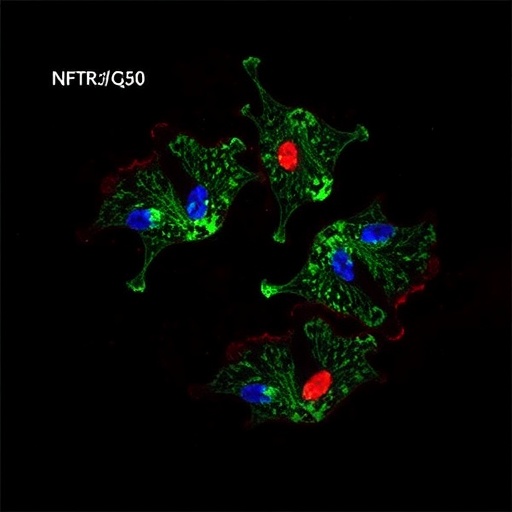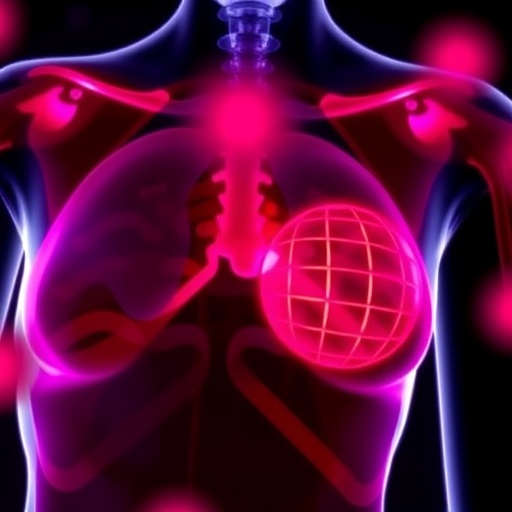In a groundbreaking prospective cohort study involving over 85,000 adults across the United Kingdom, researchers from the National Institutes of Health (NIH) in collaboration with the University of Oxford have discovered compelling evidence linking daily physical activity levels with reduced cancer risk. This significant finding, which was published on March 26, 2025, in the esteemed British Journal of Sports Medicine, emphasizes the protective effects of even light-intensity physical activities, such as running errands and completing household tasks, against various cancer types.
Historically, many investigations have pointed towards a negative correlation between physical activity and cancer incidence; however, most of these studies were based on self-reported questionnaires. Such methodologies may inadequately represent the actual intensity of physical activities undertaken by participants. Prior studies had primarily highlighted the beneficial effects of higher-intensity exercises, leaving a considerable knowledge gap regarding the impact of lighter activities on cancer risk. The current study aims to fill this gap through objective measurement methods leveraged by advanced technology.
Utilizing data from the UK Biobank study, the researchers engaged participants with a median age of 63 to wear wrist accelerometers, devices that meticulously recorded total daily activity levels, intensity, and step counts over the course of one week. This innovative approach allowed for accurate tracking and analysis of activity patterns, as researchers sought to identify correlations between daily averages of physical exercise and the onset of 13 different cancer types, including breast and colorectal cancer, well-documented to be influenced by activity levels.
After an average follow-up period of 5.8 years, it was found that 2,633 participants had received diagnoses for one or more of the examined cancer types. Astonishingly, individuals exhibiting the highest overall daily physical activity levels experienced a 26% reduction in cancer risk compared to those with the lowest recorded activity levels. This data suggests that even modest increases in daily activity could yield substantial health benefits, leading researchers to explore the concept of replacing sedentary time with both light- and moderate-to-vigorous-intensity physical activities.
The findings further emphasize that replacing sedentary behaviors with any form of physical activity can confer a protective effect against cancer. When taking into account various demographic factors, lifestyle choices, body mass index (BMI), and existing health conditions, the correlation between physical activity and cancer risk remained statistically significant, which strengthens the argument for incorporating physical activity into daily lifestyles as a preventive measure against cancer.
Interestingly, the results revealed that although higher step counts correlated with a decreased cancer risk, the intensity with which those steps were taken did not significantly impact outcomes. Specifically, comparing participants who averaged 5,000 steps daily with those who recorded 7,000 steps demonstrated an 11% reduction in cancer risk. Moreover, those who achieved a remarkable daily step count of 9,000 steps experienced a 16% lower risk than their less active counterparts. Notably, it appears that beyond this threshold of 9,000 steps daily, the benefits of risk reduction plateaus, suggesting that moderate increases in step counts can be particularly beneficial for those leading a sedentary lifestyle.
These findings advocate for a paradigm shift in public health messaging, suggesting that even light physical activities could serve as a formidable tool within cancer prevention strategies. Instead of solely focusing on formal exercise regimens, encouraging individuals to integrate more walking and similar activities into their daily routines can promote healthier lifestyles and mitigate cancer risks effectively.
The implications of such research are profound, highlighting the need for further investigation into the nuances of physical activity types. As scientists and public health advocates continue to explore the complex interaction between activity levels and health outcomes, this study signifies a pivotal step towards redefining our understanding of physical activity’s role in cancer risk reduction.
In addition to exploring the relationship between activity levels and cancer risk, this study also contributes to growing evidence that underscores the importance of healthy lifestyles in chronic disease prevention. With the existing burden of cancer on public health systems worldwide, these findings present both a wake-up call and an empowering message: individuals possess the agency to influence their health outcomes significantly through their engagement in daily physical activities.
Moving forward, it will be critical for healthcare providers to integrate these findings into counseling efforts. By advising patients and the general populace to incorporate more walking and less sedentary time into their lives, physicians can play a vital role in cancer prevention and the promotion of overall health. Not only does this shift encourage personal responsibility for health, but it also supports broader public health initiatives aimed at reducing the costs associated with cancer treatment and care.
As our understanding of the interplay between lifestyle factors and health continues to evolve, studies like this pave the way for innovative strategies aimed at combating cancer. By elevating the importance of both light and moderate forms of physical activity, researchers and public health officials can strive for tangible changes, fostering healthier communities and ultimately reducing the incidence of cancer worldwide.
In conclusion, the findings from this significant cohort study provide compelling evidence that light- and moderate-intensity physical activity is more than just a means to enhance fitness; it is an essential component of a proactive approach to cancer prevention strategies. Efforts toward maximizing daily physical activity should be embraced as a public health imperative, enabling individuals to take charge of their health and reduce their cancer-related risks through simple, yet effective lifestyle changes.
Subject of Research: Daily Physical Activity and Cancer Risk
Article Title: Amount and intensity of daily total physical activity, step count and risk of incident cancer in the UK Biobank
News Publication Date: 26-Mar-2025
Web References: British Journal of Sports Medicine
References: Not applicable
Image Credits: Not applicable
Keywords: Cancer research, physical activity, health prevention, epidemiology, UK Biobank
Tags: accelerometer data in health studiesBritish Journal of Sports Medicine publicationcancer prevention through exerciseimpact of light-intensity exerciselight physical activity and cancer riskNational Institutes of Health researchobjective measurement of physical activityprospective cohort study on exerciseprotective effects of daily activitiessignificance of household tasks for healthUK Biobank study findingsUniversity of Oxford collaboration





